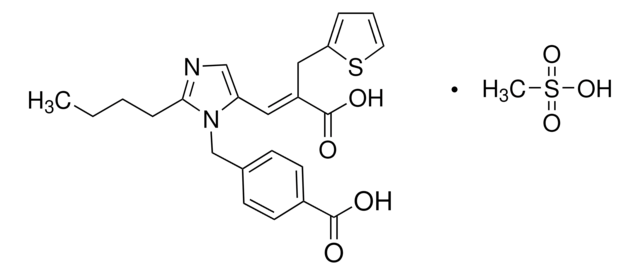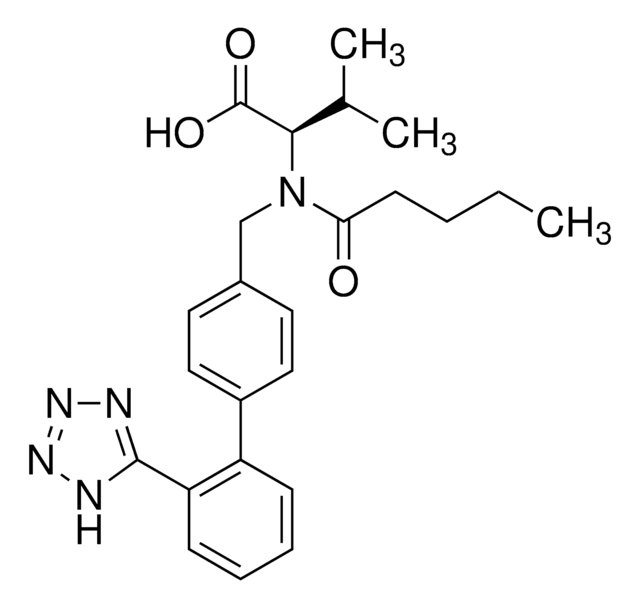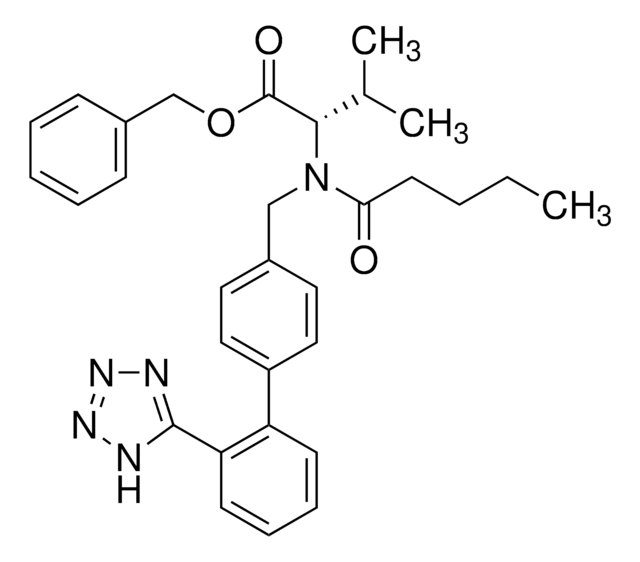SML0142
Valsartan
≥98% (HPLC)
Synonym(s):
N-(1-Oxopentyl)-N-[[2′-(2H-tetrazol-5-yl)[1,1′-biphenyl]-4-yl]methyl]-L-valine
About This Item
Recommended Products
Quality Level
assay
≥98% (HPLC)
form
powder
optical activity
[α]/D -55 to -70°, c = 1 in methanol
storage condition
desiccated
color
white to tan
solubility
DMSO: ≥20 mg/mL
originator
Novartis
storage temp.
2-8°C
SMILES string
CCCCC(=O)N(Cc1ccc(cc1)-c2ccccc2-c3nnn[nH]3)[C@@H](C(C)C)C(O)=O
InChI
1S/C24H29N5O3/c1-4-5-10-21(30)29(22(16(2)3)24(31)32)15-17-11-13-18(14-12-17)19-8-6-7-9-20(19)23-25-27-28-26-23/h6-9,11-14,16,22H,4-5,10,15H2,1-3H3,(H,31,32)(H,25,26,27,28)/t22-/m0/s1
InChI key
ACWBQPMHZXGDFX-QFIPXVFZSA-N
Gene Information
human ... AGTR1(185)
Looking for similar products? Visit Product Comparison Guide
Application
Biochem/physiol Actions
Features and Benefits
signalword
Warning
hcodes
pcodes
Hazard Classifications
Repr. 2 - STOT SE 3
target_organs
Central nervous system
Storage Class
11 - Combustible Solids
wgk_germany
WGK 3
flash_point_f
Not applicable
flash_point_c
Not applicable
Certificates of Analysis (COA)
Search for Certificates of Analysis (COA) by entering the products Lot/Batch Number. Lot and Batch Numbers can be found on a product’s label following the words ‘Lot’ or ‘Batch’.
Already Own This Product?
Find documentation for the products that you have recently purchased in the Document Library.
Customers Also Viewed
Articles
Discover Bioactive Small Molecules for ADME/Tox
Our team of scientists has experience in all areas of research including Life Science, Material Science, Chemical Synthesis, Chromatography, Analytical and many others.
Contact Technical Service
















